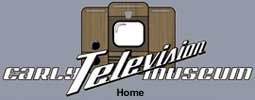Early Television David Sarnoff (1891-1971)As a boy in Russia Sarnoff spent several years in preparing for a career as a Jewish scholar of the Talmud. He emigrated with his family in 1900 and settled first in Albany, N.Y., and then in New York City. While going to school, he helped support the family by selling newspapers, running errands, and singing the liturgy in a synagogue. In 1906 he left school to become a messenger boy for a telegraph company and with his first money bought a telegraph instrument. He soon became proficient in Morse operation and found work as a radio operator for the Marconi Wireless Telegraph Company. After service on shore and at sea over the next few years, Sarnoff became operator of the most powerful radio station in the world, established by John Wanamaker atop his Manhattan department store. There, on April 14, 1912, Sarnoff picked up the distress signal from the sinking Titanic; he remained at his instrument for 72 hours, receiving and passing on the news. Rewarded by the Marconi company with rapid promotion, he became an important official of the company and in 1916 first proposed the "radio music box," or commercially marketed radio receiver. The proposal was several years in gaining acceptance, but in 1921, as general manager of the newly formed Radio Corporation of America (RCA), he demonstrated its market potential in broadcasting the boxing match between Jack Dempsey and Georges Carpentier (July 2, 1921); the broadcast created a sensation. Within three years RCA sold more than $80,000,000 worth of receiving sets. In 1926 he formed the National Broadcasting Company (NBC). By that time Sarnoff had perceived the potential of television, which the contributions of several inventors were making technically feasible. In 1928 he launched an experimental NBC television station; by 1939 he was able to give a successful demonstration of the new medium at the New York World's Fair. Development was delayed by World War II, during which Sarnoff, a reserve officer, served on General Dwight D. Eisenhower's staff as a communications consultant and was promoted to brigadier general. He became president of RCA in 1930 and chairman of the board in 1947, retiring in 1970. Sarnoff Collection display at the College of New Jersey (courtesy of Dave Sica) |
